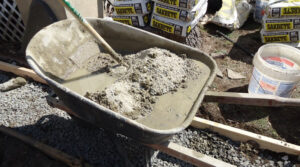ALBUQUERQUE, N.M. (AP) — Native American activists and environmentalists are pushing the U.S. Interior Department to move ahead with its promise to include tribal perspectives when making management decisions that could affect culturally significant areas beyond the boundaries of Chaco Culture National Historical Park.
A coalition of more than 20 groups and individuals sent a letter to Interior Secretary Deb Haaland on Wednesday saying oil and gas development in northwestern New Mexico remains a threat and that they want the agency to halt leasing until cumulative effects on cultural resources and the environment can be addressed.
The letter includes recommendations that supporters say would ensure lasting protections for an expansive area around the national park. One includes the creation of a tribal advisory committee and an environmental justice advisory committee with authority to inform resource development on federal lands.
Haaland, who is from Laguna Pueblo in New Mexico and is the first Native American to lead a Cabinet agency, traveled to New Mexico in 2021 to announce the “Honoring Chaco” initiative.
Since then, there have been interviews, planning sessions and meetings with historic preservation experts and others. Now, the groups want to know when the next phase will begin and when changes will start to be made.
“In order to continue to build trust and confidence that this initiative indeed represents a new direction for cultural landscape management in the region, the Department of the Interior must show that it is willing to refrain from taking interim actions that would irreparably harm the landscape and prejudice the selection of lands and resources for protection,” the letter reads.
The groups suggest that pausing development is within the agency’s authority and would be in line with the Biden administration’s policy mandates.
The Interior Department affirmed on Thursday its commitment to the Chaco initiative, saying leaders with the Bureau of Land Management and the Bureau of Indian Affairs have been working with tribal preservation officers and tribal groups.
The agency released a report in November detailing the work so far, saying the idea was to establish a new tribally led approach to best identify ways to protect the culture of tribes and pueblos throughout the region and consider strategies for securing a sustainable economic future for residents and workers.
The debate over closing off a 10-mile (16-kilometer) radius around the park has pitted the Navajo Nation against other tribes in the region. Some Navajos have called for a smaller area to be protected as a way to preserve the royalties and other revenues that some families depend on.
If approved by the Interior Department, the withdrawal would affect only federal land, but critics have argued that the checkerboard nature of landholdings in the region would limit interest in Navajo-controlled lands and those parcels owned by individual Navajo allottees.
Federal officials have billed the Chaco initiative as a novel effort that could provide a roadmap and lessons learned for future collaborations with tribes.
Still, some of the activists who have been pushing for Chaco protections say they feel like momentum has stalled, and they’ve invited federal officials to visit the region again.
Pueblo preservation experts also are working on finishing a first-of-its-kind ethnographic study of the region that they hope will be used as part of the initiative and in future decision making.
ALBUQUERQUE, N.M. (AP) — Native American activists and environmentalists are pushing the U.S. Interior Department to move ahead with its promise to include tribal perspectives when making management decisions that could affect culturally significant areas beyond the boundaries of Chaco Culture National Historical Park. A coalition of more than 20 groups and individuals sent a […]






